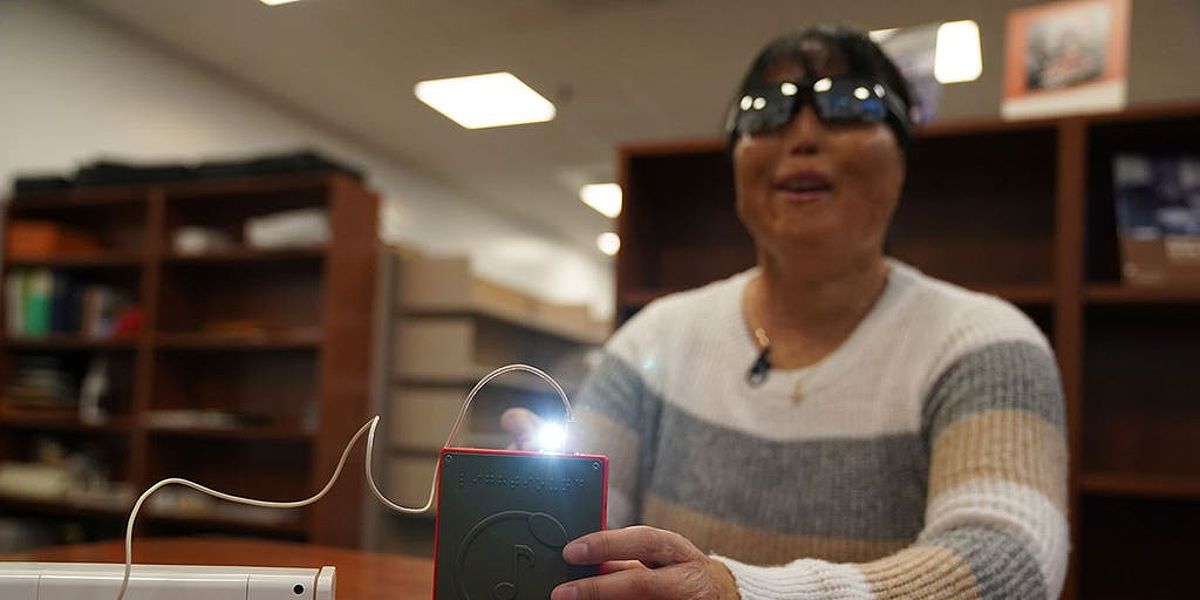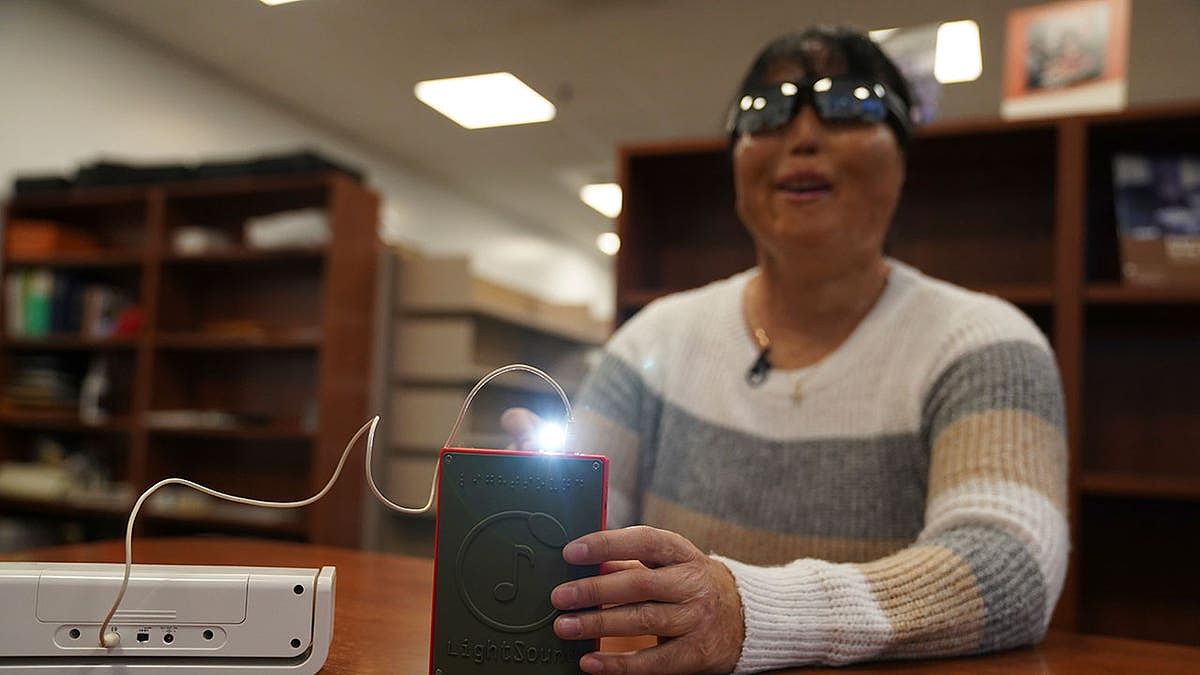Blind and visually impaired individuals will have the opportunity to engage with the upcoming total solar eclipse through sound and touch devices, allowing them to perceive the eclipse through a musical representation and feel graphics and movie clips.
Blind and Visually Impaired Individuals Can Experience the Total Solar Eclipse Through Sound and Touch Devices
Blind and visually impaired individuals will have the opportunity to engage with the upcoming total solar eclipse through sound and touch devices. On April 8, during the eclipse over North America, public gatherings will provide these devices to enable a unique experience for those who cannot see the celestial event.
Yuki Hatch, a visually impaired student from Texas, expressed her excitement about experiencing the eclipse through a device called a LightSound box. She believes that everyone should have the chance to witness the beauty of an eclipse at least once in their lifetime.
While most people will be looking up at the sky, individuals who are blind or visually impaired will be able to hear and feel the eclipse through the provided sound and touch devices. The LightSound box translates changing light into sounds, allowing listeners to perceive the eclipse through a musical representation. As the sun shines brightly, delicate flute notes will play. As the moon starts to cover the sun, the sound will shift to the mid-range notes of a clarinet. Finally, darkness will be represented by a low clicking sound.
The LightSound device was developed through a collaboration between Wanda Díaz-Merced, an astronomer who is blind, and Harvard astronomer Allyson Bieryla. Díaz-Merced, who regularly translates her astronomical data into audio for her research, created the prototype for the device during the 2017 total solar eclipse. Since then, the handheld device has been used during other eclipses.
This year, Díaz-Merced and Bieryla are working with various institutions to distribute at least 750 devices to locations hosting eclipse events in Mexico, the U.S., and Canada. They have conducted workshops at universities and museums to construct the devices and have provided do-it-yourself instructions on their website.
Experiencing the Eclipse through Sound: The LightSound Box
The LightSound box is a revolutionary device that allows blind and visually impaired individuals to perceive the total solar eclipse through sound. Developed by Wanda Díaz-Merced, an astronomer who is blind, and Harvard astronomer Allyson Bieryla, this handheld device translates changing light into musical representations.
When the sun shines brightly, delicate flute notes play, creating a sense of the sun's brightness. As the moon starts to cover the sun, the sound shifts to the mid-range notes of a clarinet, reflecting the changing celestial alignment. Finally, as darkness falls during the eclipse, a low clicking sound represents the absence of light.
The LightSound box was first created as a prototype during the 2017 total solar eclipse and has since been used during other eclipses. This year, Díaz-Merced and Bieryla are collaborating with various institutions to distribute at least 750 devices to locations hosting eclipse events in Mexico, the U.S., and Canada. Workshops have been conducted to construct the devices, and do-it-yourself instructions are available on their website.
Accessibility for All: Perkins Library and the LightSound Device
The Perkins Library, associated with the Perkins School for the Blind in Massachusetts, is ensuring that blind and visually impaired individuals can also experience the total solar eclipse. They plan to broadcast the changing tones of the LightSound device over Zoom for their members to listen online or via telephone.
Erin Fragola, the outreach manager, mentioned that many of their senior patrons have age-related vision loss, so they strive to make events more accessible for everyone. By providing the opportunity to listen to the musical representation of the eclipse, the Perkins Library is ensuring that individuals with visual impairments can share in the wonder of this celestial event.
Feeling the Eclipse: The Cadence Tablet
In addition to the LightSound device, another way for blind and visually impaired individuals to experience the total solar eclipse is through the sense of touch. The Cadence tablet, developed by Tactile Engineering in Indiana, allows users to feel graphics and movie clips with its rows of popping dots.
At the Indiana School for the Blind and Visually Impaired, the Cadence tablet has been incorporated into the curriculum since last year. It provides students with the opportunity to feel and experience visuals, including the 'ring of fire' eclipse in October.
During NASA's big eclipse-watching event at the Indianapolis Motor Speedway, the Cadence tablet will be available for blind and visually impaired individuals to use. Students like Jazmine Nelson and Minerva Pineda-Allen are excited about this opportunity to feel like they are part of something significant and to participate in the wonder of the total solar eclipse.
Ensuring Inclusion: Making the Celestial Event Accessible to All
Thanks to innovative devices like the LightSound box and the Cadence tablet, blind and visually impaired individuals can now share in the wonder of the total solar eclipse. These devices allow them to perceive the eclipse through sound and touch, providing a unique and immersive experience.
By working with various institutions and conducting workshops, developers like Wanda Díaz-Merced and Allyson Bieryla are making these devices accessible to individuals across Mexico, the U.S., and Canada. Organizations like the Perkins Library are also taking steps to ensure that their members can enjoy the eclipse through the musical representation provided by the LightSound device.
The goal is to make the celestial event accessible to everyone, ensuring that no one is left out from experiencing the beauty of the skies above. Through these innovative technologies, blind and visually impaired individuals can now witness the awe-inspiring phenomenon of a total solar eclipse.


